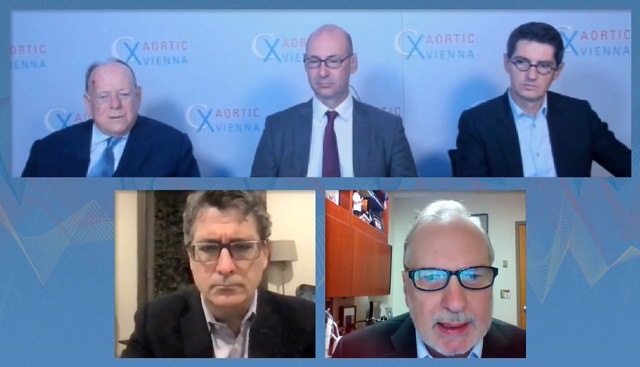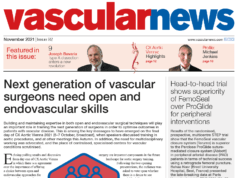
Building and maintaining expertise in both open and endovascular surgical techniques will play an important role in training the next generation of surgeons in order to optimise outcomes in patients with aortic disease. This is among the messages to have emerged from the final day of CX Aortic Vienna 2021 (5–7 October, broadcast), in which speakers discussed training in aortic procedures, as well as the need for multidisciplinary teamwork between the cardiac and vascular surgery specialties.
Registrants can view the session on demand here.
Echoing polling results and discussion from day one of the symposium in which there was agreement over the importance of offering a choice between open and endovascular approaches for aortic conditions, speakers including Society of Thoracic Surgeons (STS) past president Joseph Bavaria (Philadelphia, USA), stressed the need to have multiple options open to patients with aortic disease.
Bavaria’s presentation zeroed-in on the importance of having a multidisciplinary thoracic aortic team, including collaboration across the boundaries of both vascular and cardiovascular surgery. The goal of this type of collaboration is to move towards an aortic centre,” Bavaria said, describing this as the multidisciplinary “holy grail”.
During discussion, he remarked: “The way this is going to end up, certainly in the large centres, is that we are going to be going to the aortic centre concept. That concept is a way of bringing everyone together to wrap around the aorta in a 360-degree fashion with a multidisciplinary approach, with people with different skillsets.”
Registrants can view Bavaria’s presentation on demand here.
Also speaking during the session, Eric Roselli (Cleveland, USA) presented a view on the future of training for surgeons who will specialise in the aorta. He commented that aortic disease “knows no boundaries” and offered the opinion that there is a need to “think smarter about how we offer care for this complex disease”.
Both open and endovascular approaches can be complimentary, he added, and said that the focus has to be on what the patients’ needs are, based around the details of aortic disease and the interplay of comorbidities.
Roselli added that aortic care requires a mixed skillset, combining both cognitive and technical attributes, and said that overlapping training programmes involving specialists from cardiology, vascular surgery, and cardiothoracic surgery are important components in the future landscape for aortic surgery training.
Registrants can view Roselli’s presentation on demand here.
Following the two opening presentations, the audience was asked to vote upon whether there is a desire to see multidisciplinary aortic teams. There was total support in favour of the multidisciplinary philosophy, with a 100% vote for the motion.
Later in the session Maani Hakimi (Lucern, Switzerland) offered a view on treatment of abdominal aortic aneurysm (AAA) from the perspective of a training centre for vascular and endovascular surgery. One of Hakimi’s key themes was the development of training over time, commenting that teaching has shifted from a mentoring-based system, more towards a centralised curriculum.
In particular, during discussion that took place following his presentation, Hakimi highlighted how travel difficulties, exacerbated by the pandemic, mean that there are more limited opportunities for trainees to visit high-performing centres to learn from experts in the field. “Our young trainees would like to go abroad,” he said, before adding that it is now more challenging for centres to permit such travel, even despite its importance for development. “It is very important to do these visits,” Hakimi commented, “even for myself, to exchange [ideas] and learn.”
Registrants can view Hakimi’s presentation on demand here.












